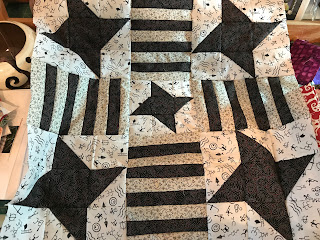Memorial Day in my mind was the last hurrah of school season and the beginning
of summer--ahh, holiday for three months!
Fun story: when we were growing up, you could go to the store and purchase
these lovely 'plastic' wreaths to take to the grave of your loved one.
These wreaths were in the stores before Mother's Day--one year, my youngest
brother who was about 6 at the time, wanted to buy one of these wreaths to
give to mother on mother's day! My father let him and so there was a
small chuckle from my mother when she received it with honor!
The custom of honoring ancestors by cleaning cemeteries and decorating graves is an ancient and worldwide tradition, but the specific origin of Memorial Day, or Decoration Day as it was first known, are unclear.
In early rural America, this duty was usually performed in late summer and was an occasion for family reunions and picnics. After the Civil War, America’s need for a secular, patriotic ceremony to honor its military dead became prominent, as monuments to fallen soldiers were erected and dedicated, and ceremonies centering on the decoration of soldiers’ graves were held in towns and cities throughout the nation.
After World War I, the day expanded to honor those who have died in all American wars.
And the poppies! Vets would sell these little paper poppies on the street corners
and we would wear them as a sign of our dedication to the veterans. Do we see
that today?
The wearing of poppies in honor of America’s war dead is traditionally done on Memorial Day (not Veterans Day). The origin of the red poppy as a modern-day symbol of this day was actually the idea of an American woman, Miss Moina Michael. Read more about the inspiration for the poppy.
In war-torn battlefields, the red field poppy (papaver rhoeas) was one of the first plants to grow. Its seeds scattered in the wind and sat dormant in the ground, only germinating when the ground is disturbed—as it was by the very brutal fighting during World War 1.
The practice of wearing of poppies was further inspired by the poem “In Flanders Fields,” written in 1915 by Canadian soldier John McCrae. He saw the poppies in burials around his artillery position in Belgium.
Today, poppies are both the symbol of loss of life as a symbol of recovery and new life, especially in support of those servicemen who were damaged physically or emotionally.























